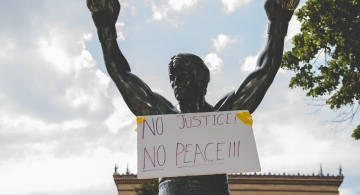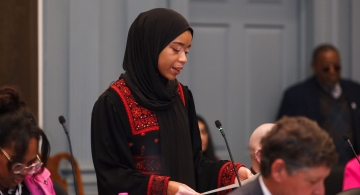Restorative Justice Principles for Journalism and Media-Making

This month the Center for Media Engagement at the University of Texas at Austin published the report “The News Philadelphians Use: Analyzing the Local Media Landscape,” with support from IPMF and the Lenfest Institute. The report explores where Philadelphian’s get their news, gaps they notice new coverage of their neighborhoods, topics they’d like to see local outlets cover, and more. The report has been well received and has prompted discussion about how journalists can better engage with Philadelphians and carefully frame stories about our neighborhoods and experiences.
The report redirected us to the wealth of community-centered, solutions-based journalism resources available (almost all free) to journalists and media-makers to share some practical information around how to tell and cover stories about public safety and legal issues with care and respect. Free Press has created an exceptional guide with 7 tips journalists can learn from transformative- and restorative-justice practitioners. We've condensed the tips here only to serve as primer and we strongly recommend reading the guide (linked below) to learn more.
For context, the Free Press guide defines restorative and transformative justice as “invested in non-punitive responses to harm that seek healing, accountability, and transformation while avoiding the reproduction of violence and domination core to the criminal legal system and other carceral settings. Transformative justice offers a framework to understand systemic harm while restorative justice helps determine what will be necessary to address that harm. It’s necessary to have both to provide a holistic approach to transformation and repair.”
This is a process that requires curiosity, patience, and being open to unexpected outcomes. While the guide was designed with journalists in mind, these tips are applicable to folks (i.e. community radio hosts, filmmakers) who work in, and interview, the community.
Explore or reconnect with the core of your work and your ‘why’
“Of all the disciplines in the world, why’d you choose to become a journalist/media-maker?” Understanding ourselves is intimately tied with understanding others in a restorative-justice practice. Journalists and media-makers must regularly engage in self-reflection to avoid filtering everyone’s stories through their own limited worldviews. Having an understanding of the why and how of your work can not only radically change your relationship with the community you tell stories about, but it is equally important as having a deep sense of the stories you’re telling.
Create spaces that promote equitable and respectful conversations
Create spaces that challenge unhealthy power dynamics. Restorative conversations take place in spaces that support emotional safety and comfort. Choose locations that are neutral, private, and conducive to focus. Consider seating arrangements that neutralize any power imbalances and remember to be supportive through the interviewee’s changes or cancellations.

Look for, and respect, cues about emotional readiness
Willingness to talk doesn’t signal readiness to do so. Journalists and media-makers asking people to journey into painful places should actively look for signs of a person’s mental and emotional readiness. A person may not be prepared to speak with you if they show significant hesitation, repeatedly reschedule, express negative emotions about past interview experiences or seem confused about certain questions being asked. No matter how critical a “source” seems for a story, make sure people are ready to be interviewed and will be doing so in a safe and respectful space.
Foster transparency and share power throughout the news creation process
Before an interview begins, outline the story-creation process as much as possible and let interviewees know their power throughout the process. Open yourself up to questions and concerns, and mutually establish a shared set of values and guardrails. This practice shifts the power dynamic, fostering shared trust, vulnerability, and agency to navigate intense emotional experiences.
Honor other people’s stories with reciprocity
For the person sharing their experience, it could be clarifying to learn about the personal truth that interests you in their story. Articulating, when appropriate and based on your own ethical considerations, the experiences that have led you to the conversation can foster trust and build safety. This practice means carefully towing the line between expressing depth and compassion and sharing unsolicited stories.

Replace control with curiosity
Journalists are trained to exert their superiority and drill for information. However, this sort of behavior is alienating and only makes it challenging for you to “get the story.” A restorative justice practice flattens power dynamics and replaces control with curiosity. You don’t need to prove your intelligence or accolades, you must only prove that you’re trustworthy and will handle another’s story with care. Journey with people through their stories by holding off questions until intense parts of a story have been told, allowing silence, and providing space for people to share their emotions.
Use the article/story to build understanding
Survivors and those who’ve caused harm often fear that they will be defined by their experiences. That’s why it’s important for you to avoid one-dimensional labels that pigeonhole perpetrators, survivors, and others. A restorative practice builds understanding by portraying people’s full human experience. It’s helpful to include people’s aspirations, purpose, and contributions outside of their darkest hours. The goal is to steer away from narratives that perpetuate helplessness and/or reinforce fear of those who’ve caused harm.

